Getting to know the CLINICAL RESIDENCY team
By Mohsina Yusuf

Emory Radiology’s clinical residency programs are some of the most competitive and highly regarded programs in the country, thanks to the leadership of Vice Chair for Education Mark Mullins, MD, and his education team. Faculty program directors and support staff members come from different backgrounds and training, but they all have one thing in common: the desire to provide the best training for the next generation of world-renowned radiologists. Each team member brings outstanding technical knowledge combined with a desire not only to give their best but also to make other peoples’ lives better. This passion for services helps them navigate all kinds of challenges, even global pandemics like COVID-19.
Dr. Mullins has served as the vice chair for education since 2008. Emory had been on his radar for a while, he says. After talking to colleagues in the department and learning more about the department’s growing achievements in radiology education and culture of inclusion and collegiality, he was sold. Each day he deftly handles clinical responsibilities, teaching, administration, and even research. It’s the perfect blend of what drew him to medicine in the first place: science and helping people. When he’s not working, Dr. Mullins enjoys staying up-to-date with all things pop culture.
Dr. Mullins has served as the vice chair for education since 2008. Emory had been on his radar for a while, he says. After talking to colleagues in the department and learning more about the department’s growing achievements in radiology education and culture of inclusion and collegiality, he was sold. Each day he deftly handles clinical responsibilities, teaching, administration, and even research. It’s the perfect blend of what drew him to medicine in the first place: science and helping people. When he’s not working, Dr. Mullins enjoys staying up-to-date with all things pop culture.
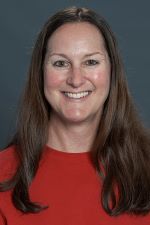
Amy Fioramonte, PhD, joined Emory Radiology in August 2019 as assistant director of education. She collaborates with Dr. Mullins on ensuring all education programs, from the undergraduate Medical Imaging Program and medical student clerkships to the residency and fellowship programs, all run smoothly while maintaining accreditation and program excellence. She also works to secure resources and troubleshoot any challenges.
Dr. Fioramonte has held various roles in academia. When she and her husband relocated to Atlanta for his work, Dr. Fioramonte was thrilled about the opportunity to join the department and learn about the world of radiology.
There is no such thing as a typical day for Dr. Fioramonte, something she loves about her role. She currently is working on the necessary logistical and technical preparations to support the ABR core exam to be administered remotely for the first time. She appreciates the team approach she and her colleagues are taking to implement the changes to the Clinical Competency Committee (CCC) process and has enjoyed helping pivot the residency recruitment process 180° from face-to-face to 100% virtual.
“Working with this diverse group is the most rewarding part of my job,” she says. “We are committed to creating a learning environment where our radiology students and trainees can achieve the best education.”
When not at work, Dr. Fioramonte enjoys traveling (pre-pandemic), reading, and fitness.
Dr. Fioramonte has held various roles in academia. When she and her husband relocated to Atlanta for his work, Dr. Fioramonte was thrilled about the opportunity to join the department and learn about the world of radiology.
There is no such thing as a typical day for Dr. Fioramonte, something she loves about her role. She currently is working on the necessary logistical and technical preparations to support the ABR core exam to be administered remotely for the first time. She appreciates the team approach she and her colleagues are taking to implement the changes to the Clinical Competency Committee (CCC) process and has enjoyed helping pivot the residency recruitment process 180° from face-to-face to 100% virtual.
“Working with this diverse group is the most rewarding part of my job,” she says. “We are committed to creating a learning environment where our radiology students and trainees can achieve the best education.”
When not at work, Dr. Fioramonte enjoys traveling (pre-pandemic), reading, and fitness.
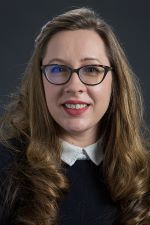
Dr. Erin Grady manages many roles at Emory Radiology, particularly with respect to education. She is the director of nuclear education and serves as the program director for the Nuclear Medicine Residency, the Nuclear Radiology Fellowship, and the Molecular Imaging and Theragnostics Fellowship programs. She also serves as the department’s director of the Grand Rounds and Visiting Professor programs.
She assists with faculty development and coordinates with other training programs that intersect with nuclear medicine, particularly our own diagnostic radiology and interventional radiology programs, as well as radiation oncology, medical oncology, endocrinology, and cardiology.
Dr. Grady appreciates Dr. David Brandon, associate program director; Ranitta McDowell, program coordinator for the Nuclear Medicine Residency and Nuclear Radiology Fellowship; and Gail Foster, program coordinator for the Molecular Imaging and Theragnostics Fellowship, for the roles they play in ensuring Emory Radiology’s nuclear medicine training programs operate smoothly and within an environment that nurtures trainees.
Dr. Grady takes a personal interest in her nuclear medicine training program team members. She appreciates their diverse interests, hobbies, and backgrounds, as well as their good humor and humility, all of which contribute to their effectiveness. Dr. Brandon, for example, loves all things Doctor Who and completed his 9th grade school year in Kenya. Gail owned and rode a unicycle. Ranitta wanted to be a forensic pathologist but couldn’t get over her fear of dead bodies and blood, although she does keep up with the field by watching all kinds of crime documentaries and shows. Dr. Grady won a mechanical bull riding competition during medical school and credits growing up on a cattle ranch as helpful for this feat!
When she isn’t working, Dr. Grady enjoys spending time with her family and two giant dogs. She loves to cook, hike, and do fun art projects with her family. She and her little one also enjoy on-the-fly dance parties!
She assists with faculty development and coordinates with other training programs that intersect with nuclear medicine, particularly our own diagnostic radiology and interventional radiology programs, as well as radiation oncology, medical oncology, endocrinology, and cardiology.
Dr. Grady appreciates Dr. David Brandon, associate program director; Ranitta McDowell, program coordinator for the Nuclear Medicine Residency and Nuclear Radiology Fellowship; and Gail Foster, program coordinator for the Molecular Imaging and Theragnostics Fellowship, for the roles they play in ensuring Emory Radiology’s nuclear medicine training programs operate smoothly and within an environment that nurtures trainees.
Dr. Grady takes a personal interest in her nuclear medicine training program team members. She appreciates their diverse interests, hobbies, and backgrounds, as well as their good humor and humility, all of which contribute to their effectiveness. Dr. Brandon, for example, loves all things Doctor Who and completed his 9th grade school year in Kenya. Gail owned and rode a unicycle. Ranitta wanted to be a forensic pathologist but couldn’t get over her fear of dead bodies and blood, although she does keep up with the field by watching all kinds of crime documentaries and shows. Dr. Grady won a mechanical bull riding competition during medical school and credits growing up on a cattle ranch as helpful for this feat!
When she isn’t working, Dr. Grady enjoys spending time with her family and two giant dogs. She loves to cook, hike, and do fun art projects with her family. She and her little one also enjoy on-the-fly dance parties!
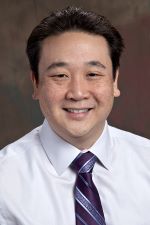
Dr. Christopher Ho is the Diagnostic Radiology Residency program director and has been managing the program since 2015. His role is to ensure all the residents’ education needs are met.
Dr. Ho’s father was a computer engineer, so his initial interest in radiology stemmed from how technology-driven the field is. As his training continued, he was drawn more and more to the balance between direct patient care and diagnostic aspects of radiology. He first came to work for Emory Radiology when a mentor of his asked him to visit Emory; he knew immediately this was the place for him.
On a typical clinical day, Dr. Ho, a breast imaging specialist, involves both a resident and a breast imaging fellow in reading diagnostic imaging studies (mammograms, ultrasounds, MRIs, etc.) and then doing imaging-guided procedures for patients. He finds it both rewarding and challenging to often be the first point of contact when working with breast cancer patients. He considers the opportunity to educate and share his excitement with trainees in both the diagnostic and procedural space to be some of the most fun moments during his day.
The most rewarding part of his job, according to Dr. Ho, is working with a strong team of faculty and residents who are innovative and committed to advancing radiology. “Seeing all of the successes, leadership positions, accolades, and awards our incredible residents receive during their time in residency makes me so proud. I’m honored I get a chance to work with them.”
Dr. Ho’s father was a computer engineer, so his initial interest in radiology stemmed from how technology-driven the field is. As his training continued, he was drawn more and more to the balance between direct patient care and diagnostic aspects of radiology. He first came to work for Emory Radiology when a mentor of his asked him to visit Emory; he knew immediately this was the place for him.
On a typical clinical day, Dr. Ho, a breast imaging specialist, involves both a resident and a breast imaging fellow in reading diagnostic imaging studies (mammograms, ultrasounds, MRIs, etc.) and then doing imaging-guided procedures for patients. He finds it both rewarding and challenging to often be the first point of contact when working with breast cancer patients. He considers the opportunity to educate and share his excitement with trainees in both the diagnostic and procedural space to be some of the most fun moments during his day.
The most rewarding part of his job, according to Dr. Ho, is working with a strong team of faculty and residents who are innovative and committed to advancing radiology. “Seeing all of the successes, leadership positions, accolades, and awards our incredible residents receive during their time in residency makes me so proud. I’m honored I get a chance to work with them.”
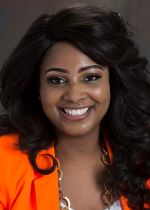
Angela Huff has been the Diagnostic Radiology Residency program coordinator since 2009. Her role is to assist the residents and manage the training of the program.
She has a unique position in that she has the opportunity to get to know the residents well during their time with the program. She gets to show the residents they have her support and that they also have everything they need to help them achieve the goal of graduation, which she finds to be the most rewarding part of her job. The most challenging part, however, is saying goodbye to the residents when they leave for fellowships or other future positions after being so close to them for four years.
Angela was first drawn to her current position because it was similar to what she did in the United States Army and because she enjoys being a team player and assisting individuals to be successful. She credits her proactivity as the reason for her effectiveness because it allows her to prepare for a task or mission months in advance. This enables the team to complete its work without inhibition, lack of time, or worry.
She is currently finishing up residency interviews while preparing for new residents, graduation, and orientation. When she isn’t working, Angela enjoys spending time with her son and going to the beach because being surrounded by water is her rejuvenation.
She has a unique position in that she has the opportunity to get to know the residents well during their time with the program. She gets to show the residents they have her support and that they also have everything they need to help them achieve the goal of graduation, which she finds to be the most rewarding part of her job. The most challenging part, however, is saying goodbye to the residents when they leave for fellowships or other future positions after being so close to them for four years.
Angela was first drawn to her current position because it was similar to what she did in the United States Army and because she enjoys being a team player and assisting individuals to be successful. She credits her proactivity as the reason for her effectiveness because it allows her to prepare for a task or mission months in advance. This enables the team to complete its work without inhibition, lack of time, or worry.
She is currently finishing up residency interviews while preparing for new residents, graduation, and orientation. When she isn’t working, Angela enjoys spending time with her son and going to the beach because being surrounded by water is her rejuvenation.
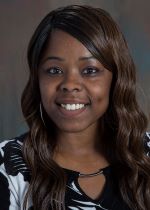
Ranitta McDowell is the program coordinator, a position she’s held for seven and a half years. Her role is to coordinate and manage resident and fellow training requirements and help maintain program accreditation.
She was first drawn to this profession when she worked in the Office of Graduate Medical Education at Summa and was quickly promoted to program coordinator for three programs. When she was ready for a change of scenery after being in Ohio almost her whole life, she applied to multiple institutions outside of Ohio. She was especially excited about life in Atlanta, so she jumped at the opportunity to join Emory. The people, food, and weather keep her here.
Ranitta credits the team’s hard work on maintaining accreditation as key to the program’s effectiveness. “People might not realize how involved our team is and how much we do behind the scenes. The most rewarding part of my job is seeing our trainees graduate,” she says.
When she isn’t working, Ranitta enjoys watching crime documentaries, cooking, and has recently dabbled in some gardening.
She was first drawn to this profession when she worked in the Office of Graduate Medical Education at Summa and was quickly promoted to program coordinator for three programs. When she was ready for a change of scenery after being in Ohio almost her whole life, she applied to multiple institutions outside of Ohio. She was especially excited about life in Atlanta, so she jumped at the opportunity to join Emory. The people, food, and weather keep her here.
Ranitta credits the team’s hard work on maintaining accreditation as key to the program’s effectiveness. “People might not realize how involved our team is and how much we do behind the scenes. The most rewarding part of my job is seeing our trainees graduate,” she says.
When she isn’t working, Ranitta enjoys watching crime documentaries, cooking, and has recently dabbled in some gardening.